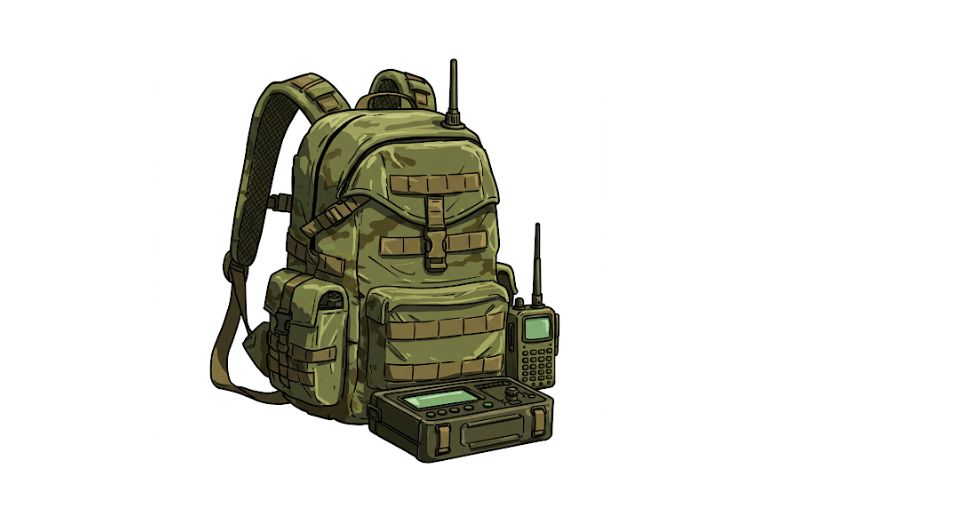
May 15, 2025

The recently released publication by Metastat Insight offers a comprehensive look into the structure and direction of the global portable military equipment market, highlighting the adjustments and innovations that continue to shape this specialized sector. Military operations, no matter their scale or location, demand equipment that ensures agility, dependability, and strategic mobility. The tools that military personnel carry into the field are designed not only for functionality but also to be adaptable to unpredictable conditions. Within this landscape, the significance of portable solutions becomes apparent. These tools allow for increased responsiveness, enabling personnel to move efficiently while maintaining operational readiness.
Across varying terrain and mission types, the importance of gear that balances performance with ease of transport is clear. In conflict zones, in humanitarian missions, or in peacekeeping efforts, the requirement remains consistent equipment must serve its purpose without creating an undue burden. From communication systems to surveillance tools, protective gear, and life-support technologies, the range of devices used in the field continues to grow. As the nature of military engagement changes, the expectations placed on this equipment shift accordingly, influencing manufacturers and strategists alike.
Attention to the human element in field operations plays a substantial role in how portable military equipment is conceptualized. End-users often operating in high-stress, high-risk environments require gear that not only performs under pressure but also minimizes fatigue and enhances mobility. The user experience, therefore, becomes an indirect factor influencing design. Whether it’s in the configuration of a wearable system or the layout of a portable communication device, attention is given to how soldiers interact with their equipment during real-time operations. The focus on portability does not imply a compromise on durability or function; rather, it emphasizes intelligent engineering that supports versatility in hostile or isolated conditions.
Integration across devices has also become more pronounced. Portable systems are increasingly expected to connect seamlessly with broader networks and technologies, allowing for synchronized operations across units. This networked environment amplifies the utility of each tool, turning individual pieces of equipment into components of a coordinated effort. For instance, a portable sensor may not only collect data but also feed it back in real-time to a command center or another mobile unit, enhancing situational awareness across all levels. Such connectivity elevates the value of portability by making each device a contributing node in a larger system of intelligence and communication.
The design philosophy within the portable military equipment market has gradually shifted toward modularity and multi-functionality. Single-purpose tools, while still critical in specific applications, are often being complemented or replaced by equipment that can perform several roles. This reduces the weight and volume of gear that personnel must carry while increasing operational efficiency. A device that merges navigation, communication, and data recording, for instance, serves more than one critical function without requiring multiple separate items. This layered utility enhances the practicality of carrying such devices in varied missions.
Environmental adaptability is another factor influencing the development of portable military gear. Units must often operate in conditions that fluctuate dramatically deserts, forests, mountainous terrain, or arctic environments each presenting unique challenges to the reliability and function of equipment. As such, manufacturers prioritize materials and technologies that offer resilience under stress, be it extreme temperatures, moisture, or exposure to physical impact. Portability is not merely a matter of weight or size but also of an item’s ability to withstand the demands of varied operational contexts without failure.
Another consideration within the portable military equipment market is the lifecycle of the equipment and how easily it can be updated or maintained in the field. Portability also encompasses the practical aspect of upkeep, as tools that cannot be serviced or adjusted on-site can become liabilities. This has led to increased interest in field-repairable designs and components that can be swapped or upgraded with minimal downtime. Such features ensure that equipment continues to perform throughout the length of deployment, supporting longer missions without requiring extensive support infrastructure.
The role of training cannot be overlooked, as it closely follows equipment innovation. New portable tools must be accompanied by instruction that enables seamless adoption. Training programs now often incorporate simulation and hands-on exposure to ensure that personnel can fully leverage new technologies. As new models are introduced and integrated into standard kits, the learning curve must be addressed quickly and effectively to avoid performance delays in the field.
The observations shared in the global portable military equipment market Report presented by Metastat Insight underscore the importance of strategic foresight, technical precision, and adaptability in shaping the tools that modern armed forces rely upon. The market continues to reflect a blend of operational necessity and innovative design, providing personnel with equipment that supports their mobility without undermining effectiveness. This progression in the development of portable military solutions highlights an ongoing commitment to enhancing performance through thoughtful engineering and responsive manufacturing. As demands continue to shift in both expected and unforeseen directions, the adaptability of this market ensures its continued relevance across a range of military and tactical applications.
Drop us an email at:
Call us on:
+1 214 613 5758
+91 73850 57479